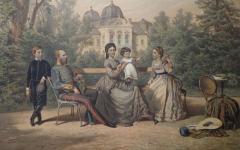THE DAILY LIFE OF THE ROYAL FAMILY IN GÖDÖLLŐ
The Suites of Elisabeth and Franz Joseph
In Gödöllő (The Land of Queen Elisabeth), Franz Joseph’s suite was on the one side of the banquet hall, Elisabeth’s one was on the other one, which was closer to the stable and was much sunnier.
“Comfort rather than grandeur was the main aim. The walls of the king’s apartment were covered with yellow panelling and grey silk wallpaper. The queen’s suite was characterised by her favourite colour, violet. Both were later changed to white, red and gold. Elisabeth’s suite consisted of a salon and writing-, bed-, dressing-, and reading rooms.” Ildikó Faludi: Elisabeth and Gödöllő
Empress and Queen Maria Theresia (1717-1780) was invited to the palace by the first builder and owner, Count Antal Grassalkovich I (1694-1761), who had been conferred a title of a count by the Queen. He had a guest room built for her Majesty’s few day’s stay. Sisi used the former guest room of Maria Theresia as a bedroom. The Queen’s floor suite consisted of four rooms, and a private staircase, which led to the three ground-floor saloons.
Maria Theresia-room in the Royal Palace of Gödöllő © Royal Palace of Gödöllő and Elisabeth's bed (which she used in Gödöllő) exhibited in the Viennese Imperial Furniture Museum © Bundesmobilienverwaltung/ fotós: Lois Lammerhuber
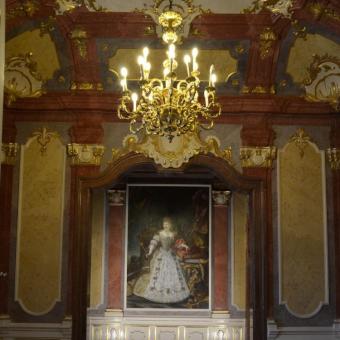
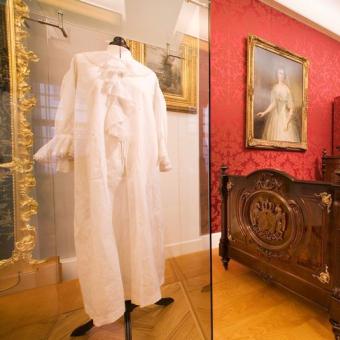
“The secret spiral staircase between the bedroom and the reading room led to the three-room suite on the ground floor, decorated with stucco. (The spiral staircase cannot be reconstructed, though its location is marked in the room leading to the air-raid shelter.)” Ildikó Faludi: Elisabeth and Gödöllő
Ida Ferenczy, the Queen's conversationalist
Ida Ferenczy from Kecskemét (a country town on the Great Plain of Hungary) came from a gentry family - she belonged to the nobility but not to the upper class, however, Elisabeth had chosen her as a “reader woman” or a conversationalist (something like a lady-in-waiting but due to her “low” origin, she could not be that legally and was conferred the title of the Queen’s reader woman) in 1863. Ida became Sisi’s confidant and best friend in quite a short time. They changed many letters in Hungarian, one can read some of them in the book of Mária Tolnay Kiss “Kedves Idám – Leveleskönyv”, in English: My Dear Ida – A Letter Book. Unfortunately, it has only been published in Hungarian (it can be bought in the Royal Palace of Gödöllő. In Gödöllő, the two rooms of Ida were located right next to the Queen’s suite. Needless to say, in the Viennese Hofburg and Schönbrunn Palace it would not have been possible because of the etiquette since Ida came “only” from a gentry family. Of course, it also shows that in Gödöllő, everything could be done the way Elisabeth wanted.
Ida Ferenczy and the reading room © Royal Palace of Gödöllő
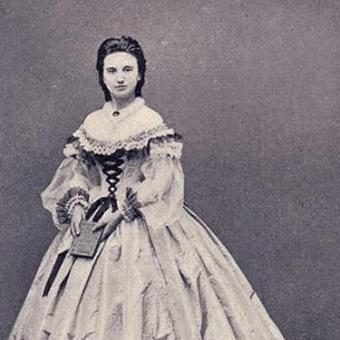
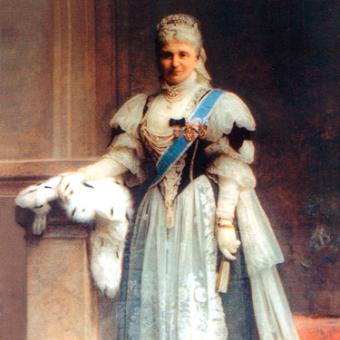
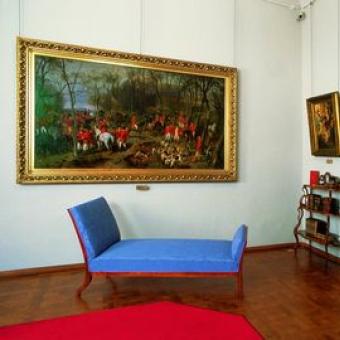
The daily routine of the King and the Queen in Gödöllő
In Gödöllő, Franz Joseph’s daily routine was quite similar to the Viennese one: he got up at four at dawn - five in winter - then after having been shaved, he had a modest breakfast. Then he began the work at his study. If he did not have breakfast in the small family dining room, he had brunch at one o'clock (usually while working), which was followed by a 30-minute walk. The average weekday lunch was usually beefsteak or other kind of meat, which was also often consumed at his desk while he was working. He regarded himself the first clerk of the monarchy and felt working as an obligation. He was working even on the day of his death. After dinner, he spent one or two hours with his family or his guests and usually went to bed at eight o'clock. One can state that a typical day of the king was quite bleak.
Franz Joseph's suite © Royal Palace of Gödöllő
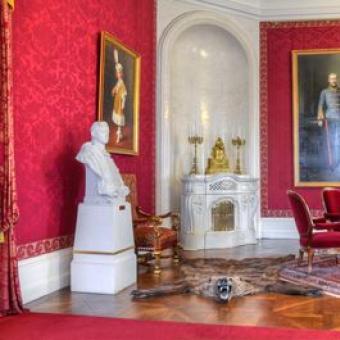
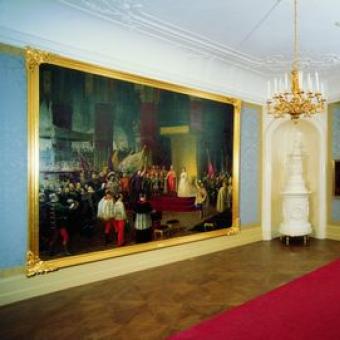
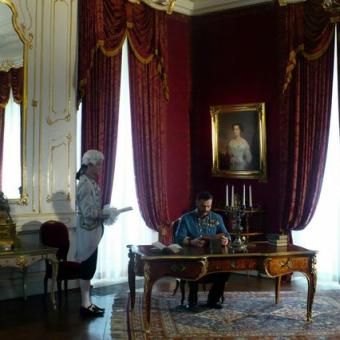
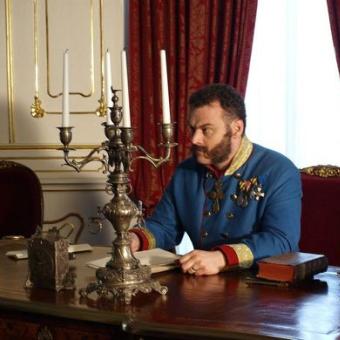
In Gödöllő, Elisabeth’s daily routine was the following: She got up at six or seven o'clock in the morning, which was followed by grooming, her daily exercises and a bath (she had a daily bath). After that her several-hour long combing and dressing session came. Then she went riding or walking. Read more: Empress Sisi’s Beautifying Baths.
After having returned, she had a modest meal and read for a while. She especially loved Heinrich Heine's poetry and the works of the following Hungarian writers: János Arany, József Eötvös, Mór Jókai, Mihály Horváth and Sándor Petőfi, whose works were her most common readings. When she was older and could not ride a horse due to her joint problems, she went for larger walks. She was walking so fast that it was hard to keep up with her even to her secret guards, whose task was watching and protecting Her Majesty, of course, Sisi was not always aware of their presence, and she tried to get rid of them as many times as it was possible so the guards had difficulties to cope with in duty. She only returned to the dinner when the family ate together.
Elisabeth's suite © Royal Palace of Gödöllő
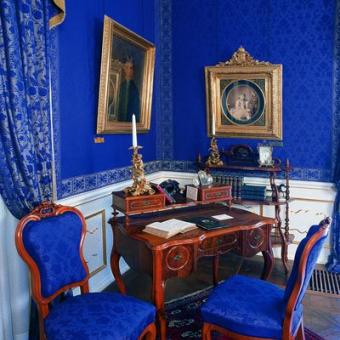
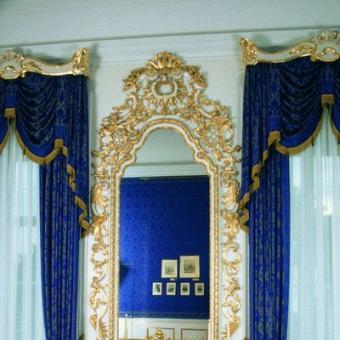
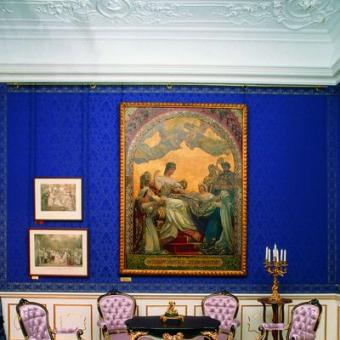
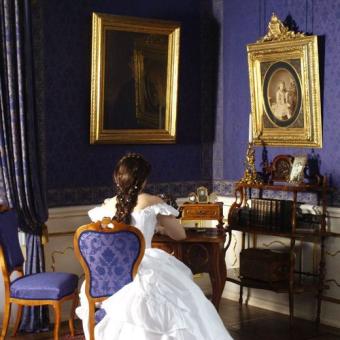
Elisabeth's porch
“It was presumably dismantled following the queen’s death. Queen Elisabeth’s porch was rebuilt in 2010 in accordance with the original designs. (...) Just before Elisabeth arrived for a visit to Gödöllő, gardeners would always plant her favourite flowers in the front garden: violets and pansies.” Ildikó Faludi: Elisabeth and Gödöllő
Elisabeth reconstructed porch in Gödöllő © Royal Palace of Gödöllő
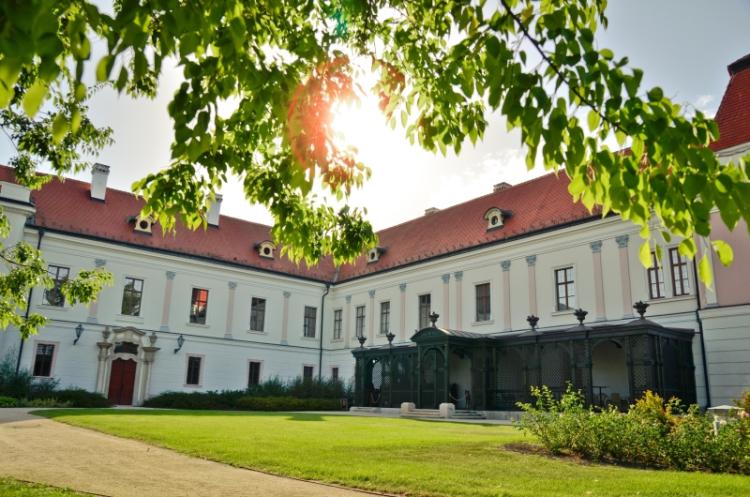
The suites of the royal children
The suites of the royal children were located in the so called “Gisela-wing”: Crown Prince Rudolf, Archduchess Gisela, the latter one’s suite later became the one of the youngest child, Archduchess Marie Valerie, the “Hungarian Princess”.
The two older children of the royal family, Gisela and Rudolf had separate suites, and the little Valerie’s room was placed in Elisabeth’s one. (It would not have been possible in Vienna due to the etiquette as mentioned above.) The Hungarian Princess later received her own suite when she was older. (We can visit her rooms in the palace since they have already been restored.)
In Vienna, the suites of Sisi’s three other children (Sophie, who died of dysentery at the age of two in Buda, Hungary, Gisela and Rudolf) were placed next to Archduchess Sophie’s one. In Hofburg, Sisi had to take a long walk and climb stairs in order to see her own children, however, she could not visit them at any time (Read more: Sisi as a young wife and mother)! The length and the time of her visits were strictly regulated by her mother-in-law. Elisabeth was travelling for longer or shorter time usually without her husband and she was rarely allowed to take her children with herself. Sometimes when she returned her little ones did not even recognise her.
In Hungarian: Erzsébet királyné és Ferenc József lakosztálya Gödöllőn
Marie Valerie's room © Royal Palace of Gödöllő
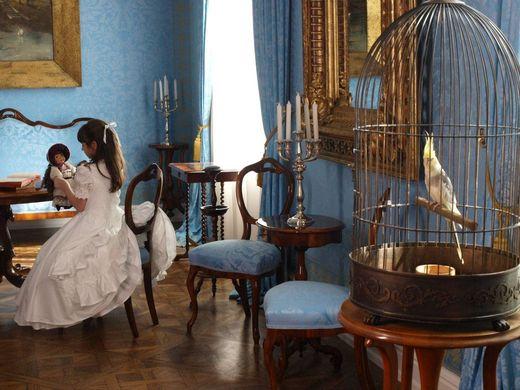
Works cited:Brigitte Hamann: The Reluctant EmpressKovács Éva Erzsébet királyné Gödöllőn. Erzsébet, a magyarok királynéja. Rubicon, Budapest, 2001Varga Kálmán: A Gödöllői Kastély évszázadai. Műemlékek Állami Gondoksága, Budapest, 2003Gödöllői kalauz. Városi Múzeum, Gödöllő, 1999Gödöllői Királyi Kastély. Tájak-Korok-Múzeumok Kiskönyvtára 510. Szám. 1997Website pages of the Royal Palace of Gödöllő: QUEEN ELISABETH’S ROOMS, GARDEN AND VERANDA and ELISABETH AND GÖDÖLLŐ

